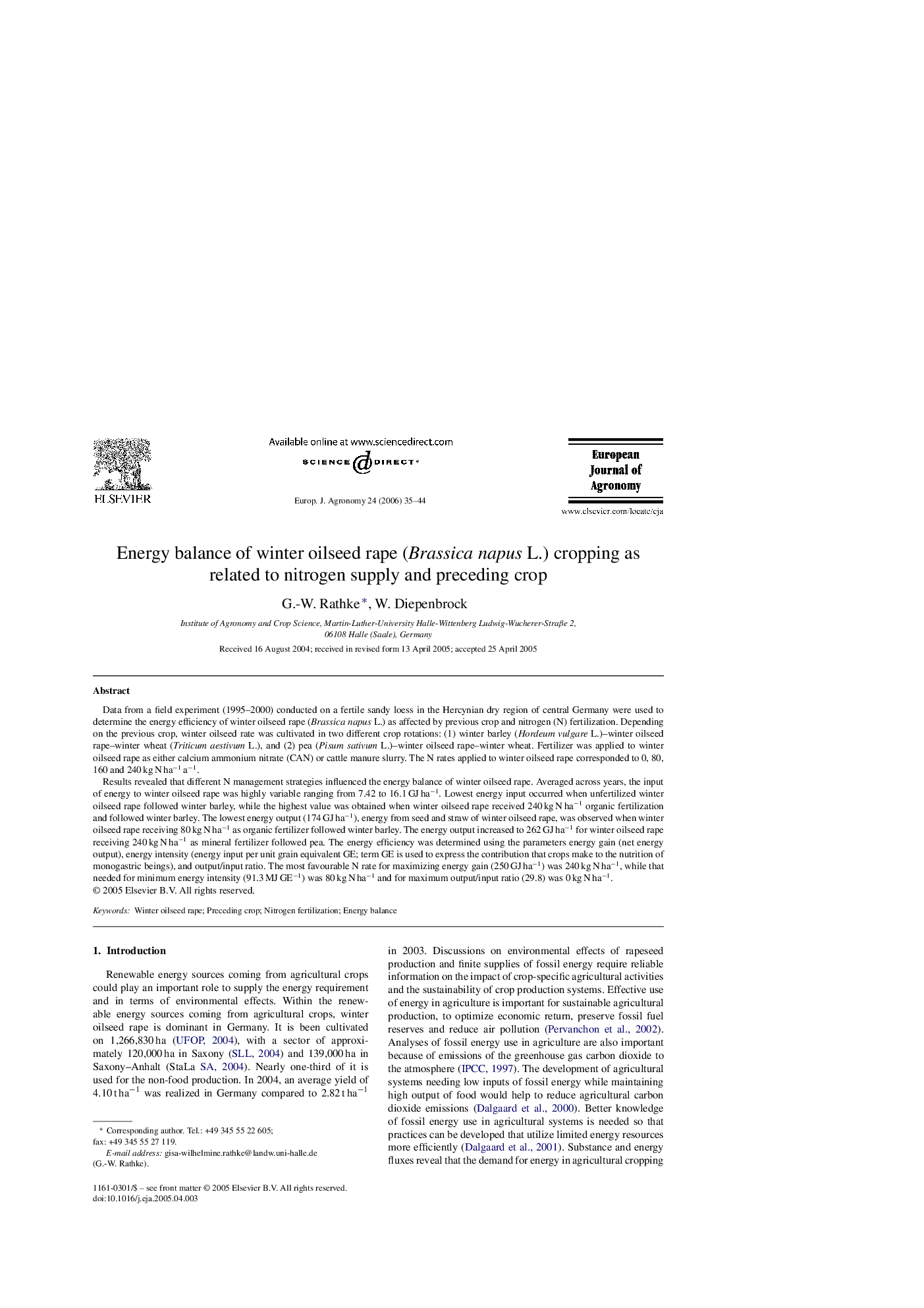| Article ID | Journal | Published Year | Pages | File Type |
|---|---|---|---|---|
| 4509727 | European Journal of Agronomy | 2006 | 10 Pages |
Data from a field experiment (1995–2000) conducted on a fertile sandy loess in the Hercynian dry region of central Germany were used to determine the energy efficiency of winter oilseed rape (Brassica napus L.) as affected by previous crop and nitrogen (N) fertilization. Depending on the previous crop, winter oilseed rate was cultivated in two different crop rotations: (1) winter barley (Hordeum vulgare L.)–winter oilseed rape–winter wheat (Triticum aestivum L.), and (2) pea (Pisum sativum L.)–winter oilseed rape–winter wheat. Fertilizer was applied to winter oilseed rape as either calcium ammonium nitrate (CAN) or cattle manure slurry. The N rates applied to winter oilseed rape corresponded to 0, 80, 160 and 240 kg N ha−1 a−1.Results revealed that different N management strategies influenced the energy balance of winter oilseed rape. Averaged across years, the input of energy to winter oilseed rape was highly variable ranging from 7.42 to 16.1 GJ ha−1. Lowest energy input occurred when unfertilized winter oilseed rape followed winter barley, while the highest value was obtained when winter oilseed rape received 240 kg N ha−1 organic fertilization and followed winter barley. The lowest energy output (174 GJ ha−1), energy from seed and straw of winter oilseed rape, was observed when winter oilseed rape receiving 80 kg N ha−1 as organic fertilizer followed winter barley. The energy output increased to 262 GJ ha−1 for winter oilseed rape receiving 240 kg N ha−1 as mineral fertilizer followed pea. The energy efficiency was determined using the parameters energy gain (net energy output), energy intensity (energy input per unit grain equivalent GE; term GE is used to express the contribution that crops make to the nutrition of monogastric beings), and output/input ratio. The most favourable N rate for maximizing energy gain (250 GJ ha−1) was 240 kg N ha−1, while that needed for minimum energy intensity (91.3 MJ GE−1) was 80 kg N ha−1 and for maximum output/input ratio (29.8) was 0 kg N ha−1.
